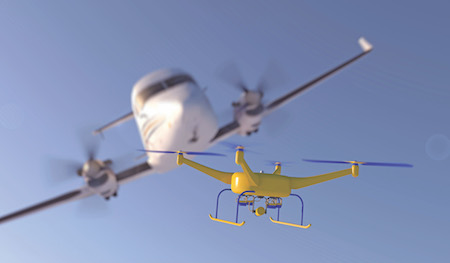Different Approaches
At the fifth annual General Aviation Safety Summit in Washington DC, delegates were told that the FAA expected 2017 to be the safest recorded year yet. A statement from the FAA stated that it had arisen from a closer relationship between both the regulator and the industry in order to address safety issues. The regulator noted that there are many angles of approach to the issue of safety, including regulatory, technological and educational.
In the last year alone, the safety measures implemented by the General Aviation Joint Steering Committee (GAJSC) were notably making a difference. Furthermore, on the educational front, the FlySafe campaign, launched in 2015, reached millions on social media promoting drone safety and providing information to prevent accidents arising from loss of control. The FAA also noted that the Part 23 rule to decease the time it takes for safety-enhancing technologies for small airplanes to reach the marketplace has been finalised.
Damage to reputation is felt more keenly in the aviation marketplace than others. Drones suffer this same PR backlash with UAS often blamed for collisions without prior and proper investigation. Although there have undoubtedly been incidents involving UAS, the FAA’s report should help to reinforce the fact that these are fewer than imagined.
In 2017, the rate of fatal accidents fell to below one per 100,000 flight hours, but outgoing FAA Administrator Michael Huerta said that there is still more that can be done: “As long as general aviation accidents keep occurring, we must stay vigilant and keep finding new ways to advance our shared safety mission.” The ultimate stated aim is to reach a point where there are no GA fatalities.
Regulation and Education
Increased regulation of the drone industry is part of an effort to promote better standards of safety and education. In a recent incident in New York, the drone operator flew well beyond visual range and was found to have insufficient knowledge of the regulations surrounding UAS. Until the NTSB (National Transportation Safety Board) contacted him, he was unaware of the collision between his drone and a helicopter authorised to be in the area. Nor was he aware of the temporary flight restrictions that were in place at the time due to presidential travel and a UN General Assembly Session. The FAA states that sUAS pilots have responsibility at all times to comply with FAA airspace restrictions. Many drone users are almost solely reliant upon the use of a safe flying app to communicate with their drones, but these are not always sufficient for properly regulated use of the technology and can become unreliable if the operator’s connection to the internet goes down and the latest news does not filter through to them. The FAA has stated that sole reliance on a non-certified app was insufficient to ensure that correct airspace information is obtained.
If educated properly on the rules, the operator in that particular incident would have been able to easily avoid the collision with a manned aircraft. Currently there is no way of ensuring drone operators take their responsibilities as pilots seriously by fully understanding the rules pertaining to the use of drones. Education of regulations is further complicated by the nature of drone regulation in the US, where a patchwork landscape has arisen with state and local laws often contradicting each other – creating a confusing situation for consumers entering into the drone world. Although there are a number of apps available, the FAA has determined that is not enough for operators. The falling numbers of fatalities recorded by the FAA coincides with some stronger moves in the area of regulation including further plans to move forward with the UAS Integration Pilot Program.


.jpg)
.jpg)
.jpg)

.jpg)

.jpg)


